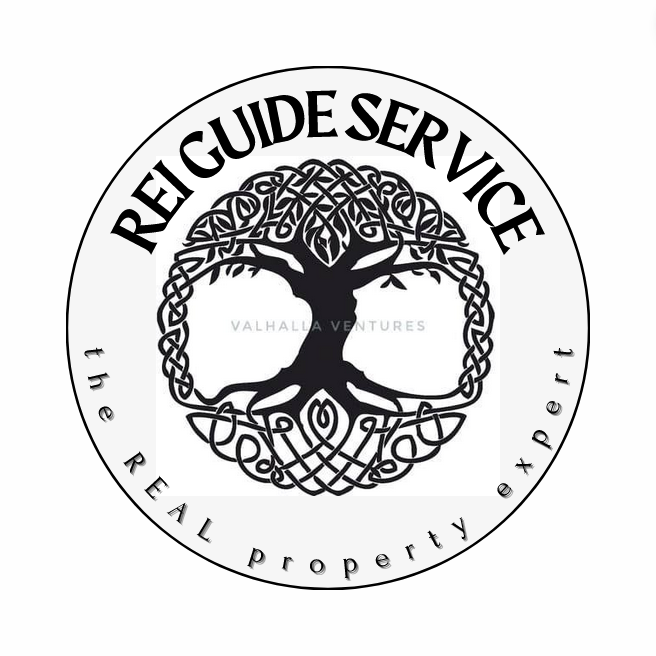Strategic Roadmap: Guiding Real Estate Investors to Achieve Their Goals Through Measured Success
To structure a plan that helps a potential client achieve their real estate investment goals, I would first focus on aligning the strategy with their experience level, financial situation, and investment objectives. Here's how I would structure it:
1. Initial Assessment & Goal Setting
Deep Dive into Goals: After the initial interview, we’d clarify their short- and long-term goals (cash flow, appreciation, building a portfolio, etc.) and align on a realistic timeline.
Financial Assessment: Review their available capital, financing options, and risk tolerance to set investment parameters.
Market Research: Choose target markets based on their preferences (residential, commercial, etc.) and current market conditions.
Skill Gap Identification: Determine where they need training or resources—whether in deal analysis, negotiations, or managing contractors.
2. Customized Strategy Development
Investment Type Selection: Develop a specific focus based on their strengths and goals, whether it’s buy-and-hold rentals, fix-and-flip, or multifamily.
Deal Flow System: Help them set up a system to consistently find and evaluate deals using MLS, off-market leads, wholesalers, or networking.
Investment Criteria: Set clear criteria for the types of properties they’ll invest in, including purchase price, rehab budget, cash-on-cash return, and expected ROI.
Action Plan: Create a detailed action plan that includes sourcing deals, securing financing, performing due diligence, and executing transactions. This will be broken down into specific steps with deadlines.
3. Execution & Scaling
Deal Analysis: Teach them how to analyze deals using tools like spreadsheets or investment software. Ensure they can accurately calculate ROI, cash flow, and potential exit strategies.
Funding Strategy: Work on securing financing, whether through banks, hard money lenders, or private investors. Build relationships with lenders if needed.
Team Building: Help them establish a network of contractors, property managers, real estate agents, and attorneys to streamline their operations.
Project Management: If they are involved in fix-and-flip, help manage timelines, budgets, and contractor coordination. For buy-and-hold, assist in optimizing property management for cash flow and long-term appreciation.
4. Ongoing Support & Adjustments
Regular Check-ins: Establish biweekly or monthly meetings to review progress, discuss challenges, and make adjustments to the plan.
Market Analysis: Keep them updated on market trends and opportunities, ensuring they stay informed of shifts in the economy, interest rates, and local market conditions.
Pivoting: If a strategy isn’t working (e.g., flips in a slow market), I’d help them pivot to a more viable strategy, such as rentals or joint ventures.
Metrics to Measure Success
The metrics I’d use to measure "success" would vary based on their specific goals, but the following would be key indicators:
Financial Metrics
Cash-on-Cash Return: This measures the client’s return on invested capital. It’s essential for cash flow properties.
Return on Investment (ROI): Whether through flips or rentals, tracking ROI helps measure overall profitability.
Monthly Cash Flow: For rental properties, this is a critical metric of how much income they are generating after all expenses.
Equity Gains: The increase in property value over time, especially for long-term investors focused on appreciation.
Number of Deals Closed: Track how many deals they’ve successfully acquired and whether they’re hitting their acquisition goals.
Process Metrics
Deal Analysis Efficiency: Measure how quickly and accurately they can analyze deals—whether they’re improving their speed and precision in finding profitable properties.
Time to Close: Track how long it takes them to close a deal, from property discovery to acquisition.
Rehab Timeline & Budget Adherence: For flips, success is measured by staying on time and within budget.
Consistency of Deal Flow: Ensure they have a steady pipeline of opportunities, a critical metric for scaling their business.
Personal Growth Metrics
Knowledge Acquisition: Track their progress in understanding key real estate concepts—analyzing deals, understanding financing, and navigating legal aspects.
Confidence and Decision-Making: Measure how confident they become in making investment decisions independently.
Network Expansion: Assess their ability to build relationships with lenders, contractors, and industry professionals.
Success Review & Scaling
Yearly Review: At the end of each year, review their overall portfolio growth, financial returns, and how well they met their original goals. Success would be defined by meeting or exceeding these goals.
Scaling Plan: Once they’re comfortable with their current investment model, I’d help them scale—whether that’s increasing the size of deals, moving into new markets, or expanding into different asset classes.
By regularly reviewing these metrics and adjusting strategies as needed, the client would have a clear path to achieving their goals with measurable progress along the way.

